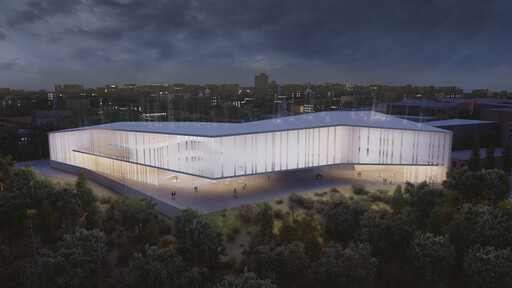On grandiose projects – Nir Hasson in Haaretz:
‘The term “museum” is misleading here. Even the site’s directors admit it. The compound may include two small museums, but they make up only a tiny portion of the allocated space and designated purposes of the center. Most of the planned activities here will be cultural and educational: performances, conventions, movie screenings and food-related events. “We’ll revive the city’s center,” promise the museum’s heads. Meanwhile, they have to settle one more dispute with the municipality.’
(…)
‘The court ultimately allowed construction to continue. The skeletons were removed in a controversial archaeological dig and the museum started to take shape. Then came the economic crisis of 2008, causing the Wiesenthal Center to run into financial difficulties. Gehry decided to abandon the project because of the financial disputes, and was replaced by Israeli architects Bracha and Michael Hayutin. They too ran into conflicts with the developers and left, with architect Yigal Levi taking over. Construction resumed, and the large white building grew upwards.’
(…)
‘As construction continued, city hall officials realized that this was no ordinary museum, but a combination of a culture center, a convention hall, an entertainment venue and a city plaza.’
(…)
‘Museum officials reject charges that the building’s purpose gradually changed over the years, and that instead of a museum of tolerance, Jerusalem has acquired a fancy convention center. They say all the current designated uses were in the original plans submitted almost 20 years ago. They admit that the name “museum” is somewhat misleading, and that the main ultimate uses will not be related to the museum.
“We wanted to become a site that would attract Paul McCartney to Jerusalem, a place that would open a cultural gate in the city. If it weren’t for the delays caused by the pandemic and the bureaucracy, the building would be bustling by now, with food festivals, performances and events that are suitable for an ultra-Orthodox mother and a Muslim child,” says Frisch.’
(…)
‘“Our goal is to help people understand the distress of others. I cannot undertake the mission of changing Israeli society, but I am trying to find a bridge for cultural dialogue through movies and multimedia.” Museum directors promise that there are some projects in the pipeline that challenge their image as rightists. They ask not to publish the names of people who are planning on participating, only noting that they are from the liberal side of America’s political map.’
(…)
‘Leaving aside the question of whether a Muslim cemetery is an appropriate venue for a museum of tolerance, what about the question of whether a city center is suitable as a convention center or a venue for flashy events?” The developers are convinced that the conflict with city hall will be resolved. They heap praise on Mayor Moshe Leon, promising that after all these years, the building’s construction is in its final lap. “What makes a city a capital is its social and economic activity – that’s what we’re contributing to Jerusalem, and it will be amazing,” says Riss.’
Read the article here.
Many museums are culture centers, convention halls, entertainment venues and city plazas, but you can overdo it.
Suitable for an ‘ultra-Orthodox mother and a Muslim child’ sounds very inclusive, why not, another food festival. Tolerance and inclusion sometimes mean that everything is done to avoid any bone of contention, at least on the surface.
The result might be utter meaninglessness.
